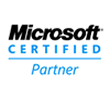- Sage Fixes
- Email Fixes
- SSL Certificates
- Windows Live Movie Maker
- Server Fixes
- Windows 7 Fixes
- VMware
- Windows 10 Fixes
- Vmware Zimbra
- Exchange Server
- Upsizing to MS SQL
- How to Fix IP Conflicts
- Internet Fixes
- Windows 11 Fixes
|
Renew your SSL Certificate on SBS 2011 Essentials using Godaddy | |||
|
To renew your SSL we need to first produce a CSR request file, and submit it to our CA. CSR = Certificate Signing Request (a text file) CA = Certificate Authority (Verisign, GoDaddy, RapidSSL) We can create the CSR on any server, but with the introduction of IIS7 it became a lot easier to do the process on the same server that already holds your certificate. In IIS6 we would generally create a dummy website to do the CSR request and install process. On our SBS Server, open up IIS Manager. Select your Server Name, and then find Server Certificates. Inside Server Certificates you will see all of the currently installed certificates you have. Fill out the information requested, taking care to get the Common Name correct. On the next page change the Bit Length to 2048. Then browse to a path on the server to save your request file. When you have saved your Request file, you are returned back to the IIS Manager. Next we need to submit our CSR to the CA. In our Case Godaddy. 1.To install the intermediate certificate, click Start, and then click Run.... 2.Type mmc, and then click OK. The Microsoft Management Console (Console) window opens. 3.In the Console1 window, click the File menu, and then select Add/Remove Snap-in. 4.In the Add or Remove Snap-in window, select Certificates, and then click Add. 5.In the Certificates snap-in window, select Computer Account, and then click Next. 6.In the Select Computer window, select Local Computer, and then click Finish. 7.In the Add or Remove Snap-in window, click OK. 8.In the Console1 window, click + to expand the folder. 9.Right-click Intermediate Certification Authorities, mouse-over All Tasks, and then click Import. 10.In the Certificate Import Wizard window, click Next. 11.Click Browse to find the intermediate certificate file. 12.In the Open window, change the file extension filter to PKCS #7 Certificates (*.spc;*.p7b), select the *_iis_intermediates.p7b file, and then click Open. NOTE: Do not install your Leaf Certificate in this area. Doing so removes your certificate from the list, and you must reinstall to correct the problem. 13.In the Certificate Import Wizard window, click Next. 14.Select Place all certificates in the following store, and then click Browse. 15.In the Select Certificate Store window, select Intermediate Certification Authorities, and then click OK. 16.In the Certificate Import Wizard window, click Next. 17.Click Finish. 18.Click OK. 19.Close the Console 1 window, and then click No to remove the console settings. 20.To install the certificate, click Start, mouse-over Administrative Tools, and then click Internet Services Manager. 21.In the Internet Information Services (IIS) Manager window, select your server. 22.Double-click Server Certificates. 23.From the Actions panel on the right, click Complete Certificate Request.... 24.To locate your certificate file, click .... 25.In the Open window, select *.* as your file name extension, select your certificate (it might be saved as a .txt, .cer, or .crt), and then click Open. 26.In the Complete Certificate Request window, enter a Friendly name for the certificate file, and then click OK. 27.In the Internet Information Services (IIS) Manager window, select the name of the server where you installed the certificate. 28.Click + beside Sites, select the site to secure with the SSL certificate. 29.In the Actions panel on the right, click Bindings.... 30.Click Add.... 31.In the Add Site Bindingwindow:
32.Close the Site Bindings window. 33.Close the Internet Information Services (IIS) Manager window. This blog was created with help from titlerequired.com & Godaddy.com | |||
| Comments | |||
| |||





